
Norbert Goeneutte (23 July 1854 – 9 October 1894) was a French painter, etcher and illustrator; notably for the novel La Terre by Émile Zola.

Norbert Goeneutte (23 July 1854 – 9 October 1894) was a French painter, etcher and illustrator; notably for the novel La Terre by Émile Zola.

He was born in Paris into a family that had moved there from Saint-Omer 1850. [1] He attended classes at the Lycée Condorcet. Following a long interruption by the Franco-Prussian War and the Commune, when he lived away from Paris, he graduated in 1871 and his father found him a place in an attorney's office. [2]
His father died shortly thereafter and Norbert persuaded his mother that he was not suited for that sort of work. She agreed, so he entered the École des Beaux-arts and began studies with Isidore Pils. When Pils died in 1875, he was replaced by Henri Lehmann, who was not liked by his students. They wrote to Édouard Manet, asking him to take Lehmann's place, but he declined. Some students remained, but Goeneutte left to set up his own studio. [2]
He frequented the Père Lathuille, a famous cabaret, where he met Manet and was introduced to the artistic circle at the Café de la Nouvelle Athènes . [1] He soon began exhibiting at the Salon but, despite his friendship with many notable Impressionists, never participated in one of their group exhibitions.
With the financial support of his brother, he frequently travelled abroad, including trips to London (1880) and Venice (1890). He also travelled extensively in France. These visits produced a multitude of landscapes and cityscapes. [2] In 1889, he became one of the founders of the " Société des peintres-graveurs français ", together with his friends Henri Guérard and Félix Bracquemond. That same year, he exhibited at the Exposition Universelle. Two years later, he found himself at odds with the Société when it refused admission to Camille Pissarro, who was not born in France. [1]
In 1891, doctor Paul Gachet, an avid supporter of the arts and an amateur artist, diagnosed Goeneutte as having a weak heart [1] and recommended that he settle in a rural area for his health. Gachet was able to find him a house near his own in Auvers-sur-Oise, called the "Villa Musette", where Goeneutte settled with his mother, his sister Reine and his brother Charles. Once there, he became involved with a group of artists associated with Charles-François Daubigny and did engraved illustrations together with Gachet. Three years later, he died of complications from what had turned out to be a lung disease (possibly tuberculosis). [2] He is buried there, near the grave of Vincent van Gogh, who had also been treated by Gachet during his final illness.

Comte Henri Marie Raymond de Toulouse-Lautrec-Monfa, known as Toulouse Lautrec, was a French painter, printmaker, draughtsman, caricaturist, and illustrator whose immersion in the colourful and theatrical life of Paris in the late 19th century allowed him to produce a collection of enticing, elegant, and provocative images of the sometimes decadent affairs of those times.

Paul Victor Jules Signac was a French Neo-Impressionist painter who, with Georges Seurat, helped develop the artistic technique Pointillism.
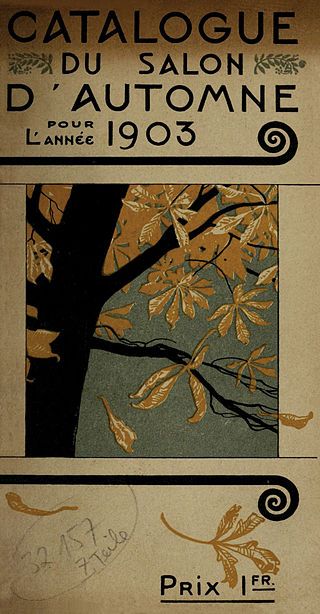
The Salon d'Automne, or Société du Salon d'automne, is an art exhibition held annually in Paris. Since 2011, it is held on the Champs-Élysées, between the Grand Palais and the Petit Palais, in mid-October. The first Salon d'Automne was created in 1903 by Frantz Jourdain, with Hector Guimard, George Desvallières, Eugène Carrière, Félix Vallotton, Édouard Vuillard, Eugène Chigot and Maison Jansen.

Bal du moulin de la Galette is an 1876 painting by French artist Pierre-Auguste Renoir.
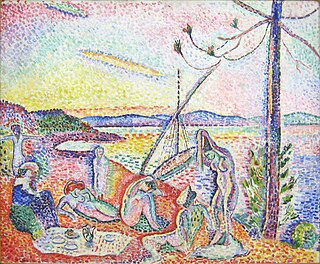
The Société des Artistes Indépendants or Salon des Indépendants was formed in Paris on 29 July 1884. The association began with the organization of massive exhibitions in Paris, choosing the slogan "sans jury ni récompense". Albert Dubois-Pillet, Odilon Redon, Georges Seurat and Paul Signac were among its founders. For the following three decades their annual exhibitions set the trends in art of the early 20th century, along with the Salon d'Automne. This is where artworks were often first displayed and widely discussed. World War I brought a closure to the salon, though the Artistes Indépendants remained active. Since 1920, the headquarters has been located in the vast basements of the Grand Palais.

Victorine-Louise Meurent was a French painter and a model for painters. Although she is best known as the favorite model of Édouard Manet, she was an artist in her own right who regularly exhibited at the prestigious Paris Salon. In 1876, her paintings were selected for inclusion at the Salon's juried exhibition, when Manet's work was not.

Auvers-sur-Oise is a commune in the department of Val-d'Oise, on the northwestern outskirts of Paris, France. It is located 27.2 km (16.9 mi) from the centre of Paris. It is associated with several famous artists, the most prominent being Vincent van Gogh (1853–1890). This was the place where van Gogh died.

Paul-Ferdinand Gachet was a French physician most famous for treating the painter Vincent van Gogh during his last weeks in Auvers-sur-Oise. Gachet was a great supporter of artists and the Impressionist movement. He was an amateur painter, signing his works "Paul van Ryssel", referring to his birthplace: Rijsel is the Dutch name of Lille.

Henri Eugène Augustin Le Sidaner who was a contemporary of the Post-impressionists, was an intimist painter known for his paintings of domestic interiors and quiet street scenes. His style contained elements of impressionism with the influences of Édouard Manet, Monet and of the Pointillists discernible in his work. Le Sidaner favoured a subdued use of colour, preferring nuanced greys and opals applied with uneven, dappled brushstrokes to create atmosphere and mysticism. A skilled nocturne painter, he travelled widely throughout France and Europe before settling at Gerberoy in the Picardy countryside from where he painted for over thirty years.

Henri Lebasque was a French post-impressionist painter. He was born at Champigné (Maine-et-Loire). His work is represented in French museums, notably Angers, Geneva, Lille, Nantes, and Paris.

René-Paul Schützenberger was a French Post-Impressionist painter.

Luxe, Calme et Volupté is a 1904 oil painting by the French artist Henri Matisse. Both foundational in the oeuvre of Matisse and a pivotal work in the history of art, Luxe, Calme et Volupté is considered the starting point of Fauvism. This painting is a dynamic and vibrant work created early on in his career as a painter. It displays an evolution of the Neo-Impressionist style mixed with a new conceptual meaning based in fantasy and leisure that had not been seen in works before.

Fauvism is a style of painting and an art movement that emerged in France at the beginning of the 20th century. It was the style of les Fauves, a group of modern artists whose works emphasized painterly qualities and strong colour over the representational or realistic values retained by Impressionism. While Fauvism as a style began around 1904 and continued beyond 1910, the movement as such lasted only a few years, 1905–1908, and had three exhibitions. The leaders of the movement were André Derain and Henri Matisse.

Édouard Joseph Dantan was a French painter in the classical tradition. He was widely recognized and successful, even receiving grudging respect from a contemporary Modernist painter and critic Walter Sickert.
Victor Alfred Paul Vignon was a French Impressionist landscape painter and graphic artist. He was involved with the impressionism movement and its protagonists, as he exhibited at the fifth, sixth, seventh, and eight Paris Impressionist Exhibitions from 1880 to 1886.

Jean-Baptiste-Antoine Guillemet was a French renowned landscape painter and longtime Jury member of the Salon des Artistes Francais. He was one of the first 19th-century artists to paint modern life, and a pivotal figure in the transition from Realism to Impressionism.
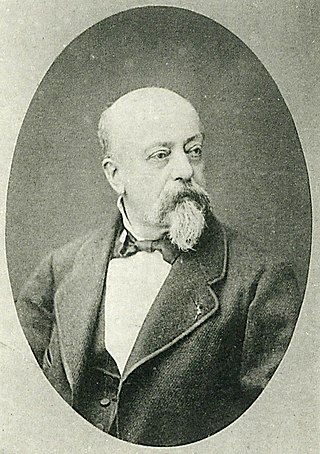
Henri Charles Antoine Baron was a French genre painter, engraver and illustrator.
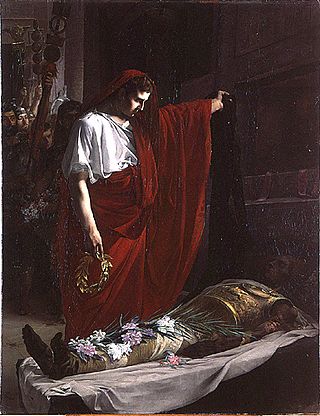
François Schommer was a French painter, watercolorist and decorative artist.

Henri Charles Guérard was a French painter, engraver, lithographer and print maker.
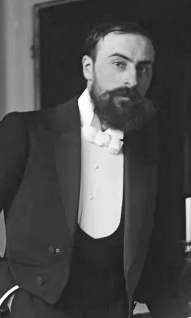
Ernest Rouart was a French painter, watercolorist, pastellist, engraver, and art collector.